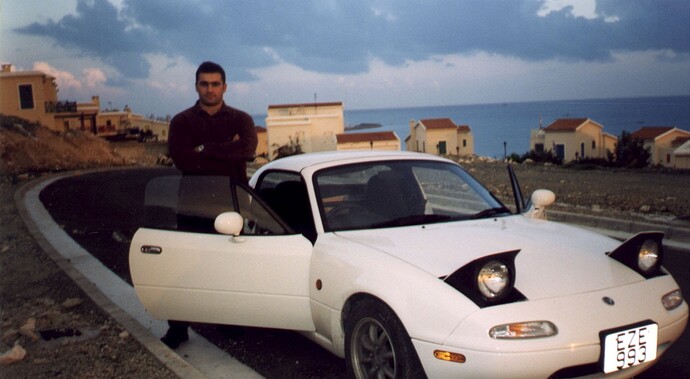I was part of those NC focus groups. They never talked about ride height. They worried more about whether the NC would be front-mid, or mid-mid. Or how the car would compare to the competition; its sometimes forgotten, but the NC faced the most competition of all the generations. If it was all about satisfying the US market (which had become a smaller market compared to the EU), then you would have had a 2.5 MZR as standard, to meet the challenge from Pontiac (the Solstice twins had basically a 2.5 Ecotec 4-banger than might have been from a Vectra).
The NC wasn’t aimed at NA and NB owners. Mazda already had their money, and, as was shown, there was a lot of brand loyalty (lots of owners went from NA to NB to NC). It was aimed at another demographic; those who didn’t buy a NA or NB. Mazda, in Europe, considered the following as direct competitors (MX5 owners might disagree, but this is what Mazda thought); 4 Cylinder BMW Z3, Lotus Elise, Toyota MRS, MGF/TF, Fiat Barchetta. The SLK wasn’t considered in my sessions. The focus groups were arranged when there had already been quite a lot of work done on the styling, as we were shown finished clays from US, Europe (Germany, Peter Birtwhistle’s group), Japan (Hiroshima and Yokohama each had their ideas). The US had the most radical departure; something more like an Elise/MR2 effort. It was considered worthy, but didn’t “feel” like a MX5. Europe came up with an evolution of the NB look, but it had changed to something that looked Jaguar or Porsche like, the perception was it would be expensive. Looking back, it was one of the Japanese submissions, and it was pretty close to a NC, with butch arches.
In addition to the above, the NC was also facing competition from the CCs; the hatches converted into party trick folding top cars. Nominally 4 seater, but in reality, only used a 2 seaters by older rivers spending the inheritance. Some of the negatives against the NA/NB was the ride quality (one man/woman’s sporty is another’s poor ride) and access (the height of the NA/NB conspires against access for the less mobile). Mazda offered the most diverse range in the European market, the only one with a choice of engines, and a wide range of trims (aka special edition). Mazda worked harder to win more European sales, not more US sales,. I suspect it saw a larger market to capture more sales, return a decent CAGR, compared to the US market, where the small roadster market was in terminal decline, and the compact convertible sector was frankly virtually non-existant. Europeans are more in favour of cross-continental holidays, traveling relatively lightly encountering roads of highly variable quality (US roads I found are generally of excellent quality). Mazda Europe’s MX5 mag, Blue Sky, seeme to be full of articles on which obscure corner of the EU you could take your MX5 on some sort of culinary tour. Americans don’t like driving long distances (long straight smooth roads, frequent speed traps).









